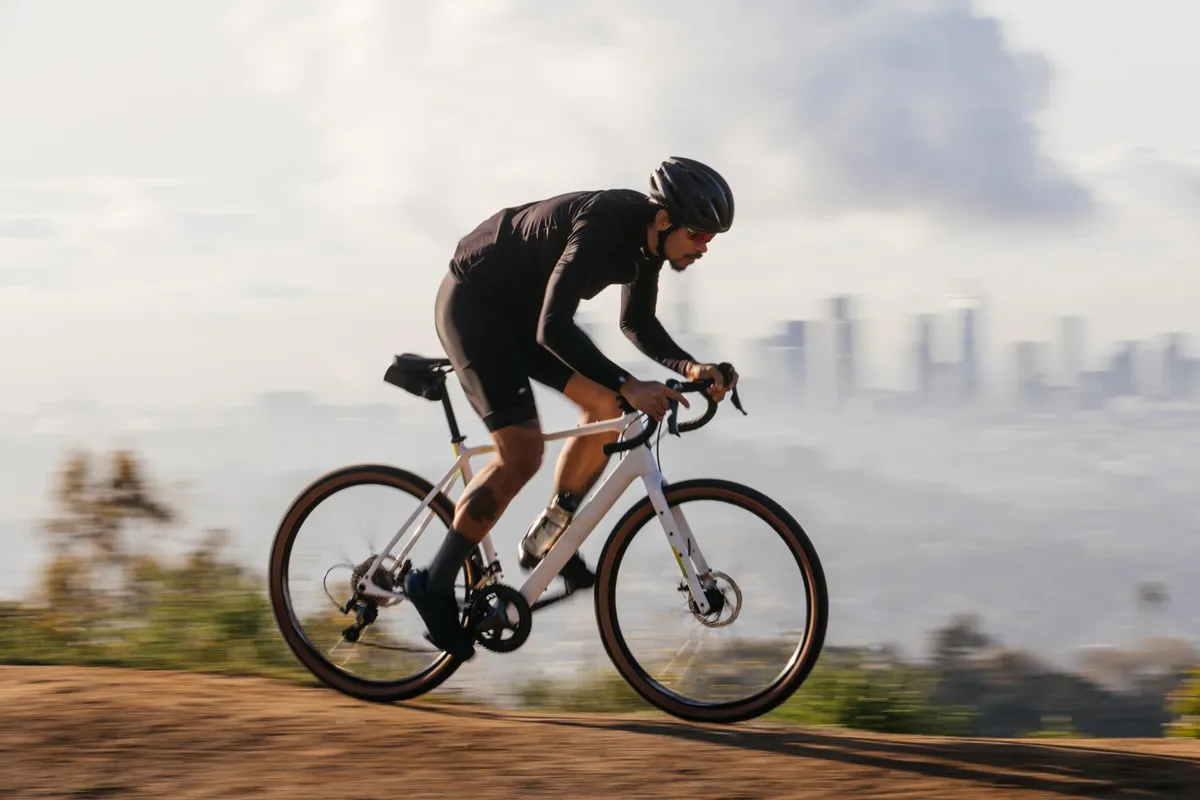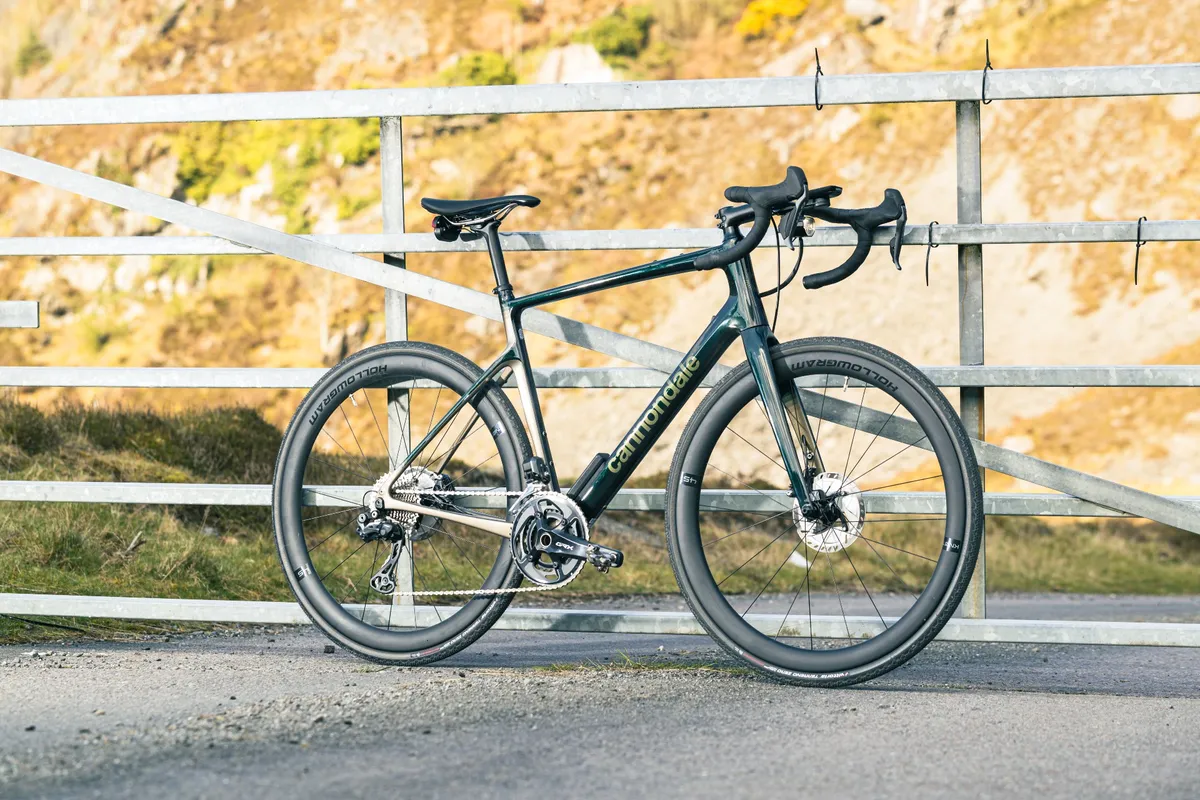It’s a term that’s popping up more and more these days: all-road bikes, all-road kit and all-road riding. But what exactly does 'all-road' mean?
Here we drill down to exactly what is meant by all-road, what the emergence of the sub-category means for gravel bikes and how it differs (or doesn't) to what’s already on offer.
What is an all-road bike?

In reality, the term ‘all-road’ isn’t particularly well defined and in many cases it’s easier to say what it isn’t, rather than what it is.
For some, all-road is an extension of the endurance road bike category: comfortable, wide-tyred road bikes that are capable of heading off tarmac onto hardpack and lighter gravel trails, or rather all ‘road’ types.
For others, all-road describes a subcategory of the gravel genre, leaning towards the lighter, faster and smoother end of terrain, rather than the more techy or steeper side of things. Perhaps an overlap with more gravel racing-specific bikes.
Road plus? Gravel lite? Road adjacent? Or just the perfect winter road bike?

Relatively few bikes are currently marketed exclusively as all-road bikes, but that's changing.
The Salsa Warroad was one of the first mainstream bikes marketed as an all-road bike. The brand's "80% road, 20% whatever" tagline for the model sums up the category quite nicely.
Belgian brand Ridley's bikes are raced at the top level in cyclocross and on the road while its Kanzo range of gravel bikes reflects the discipline's diversity.
For example, the Kanzo Fast is designed for gravel racing and the Kanzo Adventure for bikepacking.

However, Ridley says its new all-road the Ridley Grifn could be the only bike you need for road and gravel.
The Grifn's frame is light (990g claimed weight in size medium) even for a road bike. The geometry is balanced between the Ridley Fenix endurance road bike and Kanzo Fast.
As for build options, you have the choice of Shimano's gravel groupset or Shimano 105 Di2 R7150, a road-orientated electronic groupset.

The aero-shaped Wilier Rave is another example.
This can be built up as an all-road or gravel bike setup, depending on your componentry choices.

The 'LTD' build of the Cannondale Synapse is an example of an endurance road bike in an all-road spec, with 30mm WTB Exposure tyres and a 2x Shimano GRX groupset.
In fact, with the latest endurance bikes offering clearance for ever-wider tyres – 35mm in the case of the Synapse – there's far more potential these days to point your drop-bar road bike down just about any road.

The BMC Roadmachine X all-road bike takes the Swiss brand's endurance road platform and adds 32mm tyres.
Canyon, meanwhile, has added an all-road spec to the Endurace range, with 35mm Schwalbe G-One Speed gravel tyres.

You get the picture – endurance bikes and all-road bikes aren't all that far apart, with the right build kit.
In terms of what all-road isn’t, you won’t find features like dropper seatposts or novel suspension designs in this category, and you’re pretty unlikely to see 650b wheels (although framesets are likely to be compatible with both wheel sizes).

Now in its fourth generation, the Trek Domane could lay claim to being one of the first all-road bikes.
The Domane Lizzie Deignan rode to win the inaugural Paris-Roubaix Femmes had a 1x drivetrain and 30mm tubeless tyres – arguably an all-road setup.
On the latest version, Trek has increased tyre clearance to 38mm, shortened reach and claims to have improved aerodynamics and reduced weight.
BikeRadar senior technical editor Warren Rossiter concluded the new Domane is as quick as many road bikes and as capable on mixed surfaces as an all-road bike.
All-road bike vs gravel bike: what's the difference?
Tyres and clearance

Both all-road and gravel bikes feature plump tyres to help deal with rougher road surfaces and trails, though the best gravel tyres tend to be wider, with frame clearances to match.
All-road tyres typically range in size from around 28mm to 38mm, whereas gravel tyres tend to range from 35mm to 57mm.
Tyre brand Teravail offers two ‘all-road’ treads: the near-slick Rampart and the slick-centred and knobbly-shouldered Teravail Washburn, which the brand claims suits "rides that cover everything from rough pavement to fast gravel".

The semi-slick WTB Byway, Horizon and Exposure tyres fulfil a similar duty.
As you’re more likely to find a greater range of terrain types with gravel or ‘adventure’ riding, for example slippery mud, slick roots and singletrack, the number of different tread designs available for gravel riding is more diverse than with all-road options.
Regardless of whether you're on a gravel bike or all-road bike, tubeless tyres will allow you to run lower pressures, improving comfort and grip in the process, while also helping to stave off punctures.
Wheel size

All-road bikes are likely to be built around faster-rolling 700c wheels. Reducing wheel size to 650b in order to fit wider volume tyres isn’t as popular as in the gravel category.
You might still find 650b wheels on smaller-sized frames though, helping to maintain proportional geometry.
Geometry

While you should expect a more comfort-oriented design than an all-out road race bike, the geometry of an all-road bike is, in reality, usually not too dissimilar to most gravel bikes.
For example, the head-tube angle of the Salsa Warroad (size 56cm) measures 71 degrees, whereas the gravel Warbird is marginally slacker at 70.75 degrees. There’s a greater difference in terms of wheelbase, with the Warroad shaving 18mm off the total length of the bike.
As most gravel bikes are designed to perform both on and off-road, the differences between geometry here are actually not as pronounced as you might expect.
Gears and braking

While the jury’s out on 1x vs 2x for gravel riding, most all-road bikes feature a 2x drivetrain to give the widest range of gearing, with plenty of options at either end, more akin to a road cycling setup.
With less mucky conditions than gravel riding, you’re also less likely to run into trouble with a clogged-up front derailleur, too.

That said, with 1x drivetrains becoming more and more commonplace, and the move towards 12-speed allowing for an extra gear, some bikes, such as the BMC Roadmachine X, stick to a single 1x chainring.
Hydraulic road disc brakes are almost unanimous on new bikes in this category, favoured for their reliable performance over a range of conditions and good braking modulation.
Suspension, droppers and mounts

As all-road riding tends to favour the faster side of gravel, rather than rooty, rocky, see-how-far-you-can-get-your-bum-over-the-back trails, you won’t find gravel suspension or dropper posts as standard here.
For all-road bikes with bikepacking capability, you might find more mounts than a typical road bike (think triple boss mounts on the fork blades, under the down tube, or on the top tube), allowing you to carry extra gear for your adventurous long or multi-day rides.
All-road: the perfect winter road bike?

With chunkier tyres to tackle potholes, along with mounts for mudguards and a geometry that puts comfort over all-out performance, it’s no wonder that some riders are turning to all-road rigs for winter road bikes.
Rather than trash your fanciest road bike through the muck, ice and salty roads, a more robust and winter-friendly all-road alternative certainly isn’t a bad shout.
Plus, you’ll really feel the benefit when it comes to swinging a leg back over your best bike in the spring.
All-road vs gravel – what's right for you?

If you’re stuck choosing between an all-road bike and a gravel bike, take some time to think about what kind of riding you’d like to tackle.
If you’re predominantly going to stick to the road with some short forays onto well-groomed, light and dry gravel roads, then an all-road bike might be just the ticket.
Or consider an endurance road bike with the option to fit a set of the best tubeless tyres in a 30mm+ width.

However, if you’re after something more versatile, with even chunkier tyres 40mm-wide and beyond, and plan to head onto more technical trails and off-road tracks, then a gravel bike will probably be a better idea.
Remember that you can radically change the ride feel of your bike with a switch of tyres: narrower and slicker will ride totally differently to chunkier knobbly tyres, and a gravel bike will be able to fit both.

